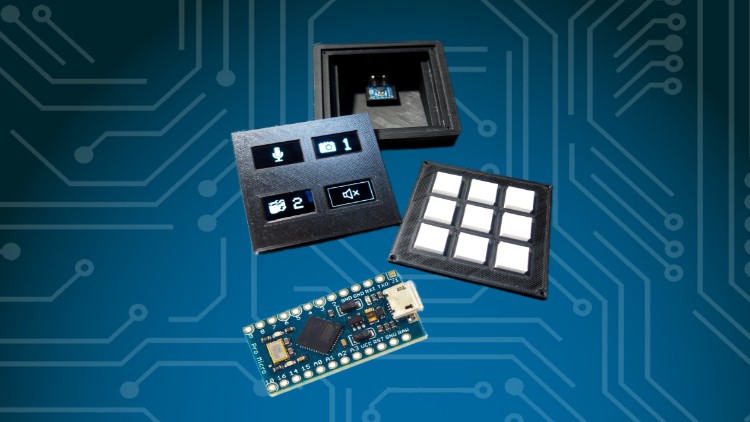
Take your streaming/video recording to the next level and build your own hotkey deck
What you will learn
Display graphics and text on an OLED display
Send keyboard commands to operating system using Arduino
Create 3D printed constructions
Introduction to DesignSpark Mechanical
Description
We build this hands-on project step by step – both the 3D printing and the programming. You will be provided with all codes and templates. Frustration-free development is guaranteed.
This practice project has TWO options: The case fits for both variants, only the keyboard field changes.
VARIANT 1: 9 buttons. As often shown and used in other variants, in this project no buttons from a keyboard are used, but common (Arduino) buttons, which can be purchased cheaply or are available in every hobby workshop. The design is built in such a way that the small buttons are operated by means of self-printed pushbuttons. The DIY idea is the top priority here.
VARIANT 2: You want more? More individualization? We use 4x OLED displays for this hands-on project to show the graphics. The OLEDs are robust enough that we can also use them as “push buttons”. We build the mount so that the OLEDs can be actuated and the underlying pushbuttons transmit the signal to the Arduino. Simple, easy and low budget 🙂
In this video course you will learn the basics of 3D design. I use the free program DesignSpark Mechanical. This program is simple in terms of functionality and I find it intuitive to use. Of course you can also use any other 3-D program, because I usually use only the conventional tools. We first design the housing. We expand the case step by step, so that we can complete the finished DIY Hotkey case over several chapters.
Again and again, the already finished printed housing is also connected, so that you can spatially imagine the next steps well.
In the last part we dedicate ourselves to the programming of the Arduino. I will show you in the course how to create the wiring based on the schematics. Likewise, depending on the selected variant, we will also look at the used libraries. You will be able to create your own graphics for the OLEDs and then change them depending on the keystroke.
We install the following components in this practical project.
- Arduino Pro Micro
- 9 xTaster oder
4 OLEDs 128×64 mit 1x TCA9548A - 3D printer
Don’t hesitate and take your streaming/video recording to the next level with a custom and self-made hotkey deck.
I am looking forward to welcome you in my course
Markus Edenhauser
pixelEDI
Content